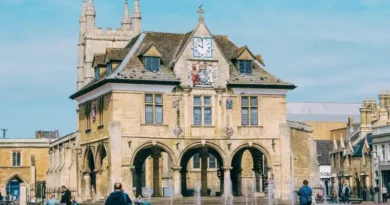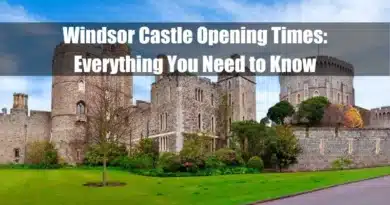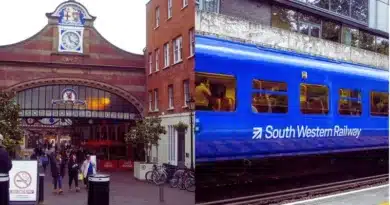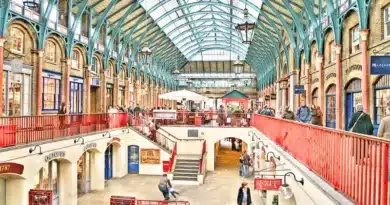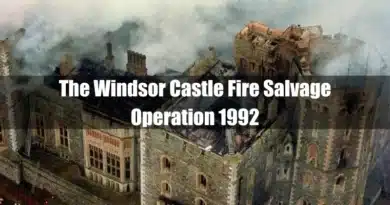Is Windsor One Of The Best Castle In The World?
Yes, Windsor Castle is widely considered one of the best castles in the world. Its status as the oldest and largest inhabited castle—continuously serving as a royal residence for over 900 years—sets it apart. It has evolved through successive phases, constructed by William the Conqueror in the 11th century, blending medieval fortifications with Georgian and Victorian refinements. Iconic features such as St George’s Chapel, heralded as a supreme achievement of English Perpendicular Gothic design, further underscore its architectural and historical importance. While “the best” is subjective, Windsor’s rich heritage, continuous royal association, and ability to encapsulate centuries of British history firmly position it among the world’s premier castles.
Takeaways
| Key Points |
|---|
| Windsor Castle was originally constructed around 1070 by William the Conqueror following his victory at the Battle of Hastings, strategically sited above the River Thames near a Saxon hunting ground and initially built as a motte-and-bailey fortification featuring a wooden keep. |
| Over subsequent centuries, it evolved from a military stronghold into a magnificent royal residence, with early use by Henry I and later enhancements by monarchs such as Henry II, Edward III, and Charles II that reflected both defensive needs and regal tastes. |
| The castle has been central to key historical events, including withstanding a siege during the First Barons’ War in 1216, hosting grand medieval tournaments, and becoming the spiritual home of the Order of the Garter established by Edward III, with significant architectural milestones like the construction of the Round Tower and the elaborate developments in St George’s Chapel. |
| Its architectural evolution is evidenced by the transition from timber to stone construction, the introduction of Perpendicular Gothic elements, the influence of Baroque design during Charles II’s reign, and the Gothic Revival restorations commissioned by George IV in the 19th century. |
| Today, Windsor Castle stands as Britain’s oldest and largest inhabited castle—a living symbol of royal tradition and national heritage—continuously serving as a residence and ceremonial venue, while also being compared with other renowned fortifications such as Neuschwanstein, Château de Chambord, Edinburgh Castle, and Himeji Castle for its unparalleled historical and architectural significance. |
Introduction
Windsor Castle, located in Berkshire, England, is the world’s oldest and largest inhabited castle. Established in the 11th century, it has been a continuous residence for British monarchs for nearly millennia. Beyond its role as a royal home, the castle stands as a symbol of British heritage, reflecting the nation’s architectural evolution and historical events.
Historical Significance
Origins and Construction by William the Conqueror
Following his victory at the Battle of Hastings in 1066, William the Conqueror began constructing Windsor Castle around 1070. Strategically positioned high above the River Thames and adjacent to a Saxon hunting ground, the site was chosen to guard the western approaches to London.
The original structure was a motte-and-bailey design, featuring a wooden keep on a man-made mound encircled by a protective enclosure. This design was typical of Norman military architecture, intended to establish dominance and provide a defence.
Role Through Various Monarchies
Throughout its extensive history, Windsor Castle has been transformed from a strategic fortification into a magnificent royal residence. Henry I was the first monarch to use the castle as a residence, celebrating significant events there, such as his marriage in 1121.
Subsequent monarchs, including Henry II, Edward III, and Charles II, each contributed to the castle’s development, enhancing its defensive structures and residential quarters. These continuous modifications reflect the changing needs and tastes of the monarchy over centuries.
Key Historical Events Associated with Windsor Castle
- c. 1070: William the Conqueror initiates the construction of Windsor Castle as a motte-and-bailey fortification.
- c. 1170: Henry II constructs the Round Tower, enhancing the castle’s defences.
- 1216: During the First Barons’ War, Windsor Castle withstands a siege by rebel barons opposing King John’s rule.
- 1278: The castle hosts a grand medieval tournament, reflecting its status as a royal residence.
- 1344: Edward III establishes the Order of the Garter, with Windsor Castle as its spiritual home.
- 1348: The Order of the Garter holds its inaugural chapter meeting in St George’s Chapel.
- 1475: Construction of the stone-vaulted ceiling in St George’s Chapel is completed, exemplifying Perpendicular Gothic architecture.
- 1478–1485: St George’s Chapel’s intricate oak choir stalls were installed.
- 1642–1651: During the English Civil War, the castle serves as a military headquarters for Parliamentary forces and a prison for captured Royalists.
- 1649: Following his execution, King Charles I is interred in a vault beneath St George’s Chapel.
- 1820–1830: King George IV commissions architect Jeffry Wyatville to undertake extensive renovations, transforming the castle into a modern royal palace.
- 1992: A significant fire damages parts of the Upper Ward, leading to a major restoration project completed in 1997.
- 2022: Queen Elizabeth II is laid to rest in the King George VI Memorial Chapel within St George’s Chapel.
These events underscore Windsor Castle’s enduring role in British history, serving as a royal residence, military stronghold, and ceremonial site.
Architectural Features

Overview of Architectural Styles
Windsor Castle’s architecture reflects a rich tapestry of styles accumulated over nearly millennia. Initially constructed as a motte-and-bailey fortress by William the Conqueror in the 11th century, the castle’s early design featured timber structures atop a raised earthwork encircled by a protective enclosure. In the late 12th century, these wooden defences were replaced with stone under Henry II, marking a transition to more durable fortifications.
The subsequent centuries saw continuous enhancements: the 15th century introduced Perpendicular Gothic elements, notably in St George’s Chapel; the 17th century embraced Baroque influences during Charles II’s reign; and the 19th century witnessed a Gothic Revival under George IV. This architectural evolution showcases the castle’s adaptation to changing tastes, functions, and requirements over time.
Notable Structures within the Castle Complex
The Round Tower
Centrally positioned within Windsor Castle, the Round Tower stands atop a man-made mound, originally part of the Norman motte-and-bailey design. Constructed in the late 12th century during Henry II’s reign, the tower was built to replace the original wooden keep, providing a more formidable stone structure. Historically, it served as a defensive stronghold and a symbol of royal authority.
In the 19th century, George IV directed architect Jeffry Wyatville to raise the tower’s height, enhancing its imposing presence. Today, the Round Tower not only offers panoramic views of the surrounding landscape but also houses the Royal Archives, preserving significant documents and records of the monarchy.
St George’s Chapel
St George’s Chapel is a prime example of Perpendicular Gothic architecture located in the castle’s Lower Ward. Commissioned by Edward IV in 1475, the chapel was completed under Henry VIII’s reign. Its design features intricate stone fan vaulting, large stained glass windows, and ornate wooden choir stalls adorned with heraldic emblems.
As the spiritual home of the Order of the Garter, Britain’s highest order of chivalry, the chapel has been the site of numerous royal ceremonies, including weddings and funerals. Notably, it serves as the final resting place for several monarchs, such as Henry VIII, Charles I, and, more recently, Queen Elizabeth II.

State Apartments
The State Apartments, situated in the Upper Ward, exemplify the castle’s role as a royal residence and a venue for official events. These opulent rooms were extensively renovated during the 17th century by Charles II and later in the 19th century by George IV. Each room showcases a blend of architectural styles and houses an impressive art collection, including works by renowned artists like Rembrandt and Rubens.
The Grand Reception Room, adorned with gilded mouldings and chandeliers, epitomises Baroque grandeur, while other rooms reflect Gothic Revival aesthetics. These apartments continue to host state visits and official ceremonies, underscoring Windsor Castle’s enduring function in British royal life.
Cultural and Royal Importance
Function as a Royal Residence
Windsor Castle has served as a principal residence for British monarchs since the reign of Henry I in the 12th century. Its proximity to London, combined with its strategic and scenic location, has made it a favoured royal retreat. Throughout history, monarchs have utilised the castle not only as a private home but also as a base for administrative and governmental affairs. In recent times, Queen Elizabeth II spent many of her weekends at Windsor, which became her primary residence during the later years of her reign. The castle’s continuous use underscores its significance as a living symbol of the monarchy’s presence and stability.
Ceremonial Events and Traditions
Windsor Castle is a focal point for numerous royal ceremonies and traditions. One of the most notable is the annual Order of the Garter service, held in St George’s Chapel. Established in 1348 by Edward III, the Order is the oldest and most senior British order of chivalry. Members, including the monarch and selected knights, don elaborate robes and insignia for the service, reflecting centuries-old traditions. The castle also hosts state banquets, official receptions, and investiture ceremonies, where individuals are honoured for their contributions to society. These events reinforce the castle’s role as a ceremonial heart of the monarchy.
Connection to the Order of the Garter
The Order of the Garter, founded by Edward III, has its spiritual home at Windsor Castle. St George’s Chapel serves as the Order’s mother church, where annual services and installations of new knights occur. The chapel’s quire is adorned with the banners, crests, and stalls of the current Knights of the Garter, symbolising their esteemed positions. This deep-rooted connection highlights the castle’s enduring association with chivalric traditions and its role in upholding the ceremonial aspects of British nobility.
Through its architectural splendour and continuous function as a royal residence, Windsor Castle embodies the historical and cultural essence of the British monarchy, serving as a testament to the nation’s rich heritage.
Comparison with Other Renowned Castles
Criteria for Evaluating the “Best” Castles
Determining the “best” castles involves assessing various factors that contribute to their historical, architectural, and cultural significance. Key criteria include:
- Historical Importance: The castle’s role in regional or national history, including events of political or military significance.
- Architectural Design: Uniqueness, style, and complexity of the castle’s construction, as well as any innovative features.
- State of Preservation: The castle’s condition, including how well it has been maintained or restored over time.
- Cultural Impact: The castle influences art, literature, and popular culture and its role in contemporary society.
- Visitor Experience: Accessibility to the public, quality of tours, educational value, and overall visitor satisfaction.
Comparative Analysis
Below is a comparative analysis table for Windsor Castle alongside Neuschwanstein Castle, Château de Chambord, Edinburgh Castle, and Himeji Castle:
| Castle | Location | Construction Period | Architectural Style | Historical Significance | Unique Features/Remarks |
|---|---|---|---|---|---|
| Windsor Castle | Windsor, Berkshire, England, UK | Founded c. 1070 – continuously evolved | A mix of Gothic, Tudor and Georgian influences | The oldest and largest inhabited castle; an official royal residence; venue for state events and royal weddings | Home to extensive state apartments and St George’s Chapel; still in active royal use |
| Neuschwanstein Castle | Schwangau, Bavaria, Germany | 1869–1886 | Romantic Revival / fairy‐tale Gothic | Commissioned by King Ludwig II as a personal retreat; emblematic of 19th‑century Romantic ideals; inspired Disney designs | Set amid the Bavarian Alps; noted for its lavish, storybook appearance |
| Château de Chambord | Loire Valley, France | Begun in 1519 (Renaissance era) | French Renaissance | Originally built as a royal hunting lodge for King François I; a UNESCO World Heritage Site showcasing Renaissance splendour | Renowned for its iconic double helix staircase and grand, ornate design |
| Edinburgh Castle | Edinburgh, Scotland | Established in the 12th century (site occupied since the Iron Age) | Medieval fortress with Gothic elements | A key Scottish stronghold and former royal residence; central to national history; houses the Crown Jewels | Perched atop Castle Rock, offering panoramic views of Edinburgh |
| Himeji Castle | Himeji, Hyōgo Prefecture, Japan | Largely rebuilt in the early 17th century (with origins from the 14th century) | Japanese feudal castle architecture | The best-preserved example of traditional Japanese castle design; a national treasure symbolising feudal Japan | Nicknamed the “White Heron Castle” for its elegant white façade and sophisticated defence system |
Windsor Castle, England

As the world’s oldest and largest inhabited castle, Windsor Castle has been a continuous residence for British monarchs for nearly a millennium. Its architectural evolution showcases a blend of medieval fortifications and modern restorations. The castle remains a central site for state occasions and royal ceremonies, reflecting its enduring cultural significance. Visitors can explore the State Apartments and St George’s Chapel and witness the Changing of the Guard, enhancing its appeal as a tourist destination.
Neuschwanstein Castle, Germany

Constructed in the 19th century under King Ludwig II of Bavaria, Neuschwanstein Castle is renowned for its fairy-tale appearance, featuring a blend of Gothic, Romanesque, and Byzantine architectural styles. Despite its relatively recent origin and limited historical events, its picturesque design has significantly influenced art and popular culture, inspiring works such as Disney’s Sleeping Beauty castle. The castle attracts millions of visitors annually, drawn by its romantic aesthetics and scenic alpine setting.
Château de Chambord, France

Built in the early 16th century as a hunting lodge for King Francis I, Château de Chambord exemplifies French Renaissance architecture, combining medieval forms with classical elements. Notable for its distinctive double helix staircase, possibly influenced by Leonardo da Vinci, the château reflects the opulence of the French court. While it was seldom used as a royal residence, its architectural grandeur and extensive grounds make it a UNESCO World Heritage site and a popular tourist attraction.
Edinburgh Castle, Scotland

Perched atop Castle Rock, Edinburgh Castle has been a focal point of Scottish history since at least the 12th century. Serving variously as a royal residence, military stronghold, and now a museum, the castle has witnessed numerous historical events, including sieges and royal ceremonies. Its diverse architectural features reflect centuries of construction and adaptation. As one of Scotland’s most visited attractions, it offers panoramic views of Edinburgh and houses the Scottish Crown Jewels.
Himeji Castle, Japan

Dating back to the 14th century, Himeji Castle is celebrated as Japan’s most pristine surviving feudal castle. Known as the “White Heron Castle” for its elegant appearance, it exemplifies traditional Japanese castle architecture with complex defensive systems and aesthetic design. Remarkably preserved through natural disasters and wars, Himeji Castle is a UNESCO World Heritage site and offers insight into Japan’s feudal history and architectural ingenuity.
Each of these castles holds a unique position in history and culture, making the designation of the “best” castle subjective and dependent on specific evaluative criteria. Windsor Castle stands out for its continuous role as a royal residence and its deep integration into British ceremonial life. In contrast, Neuschwanstein is captivated by its romantic architecture, while Himeji offers exceptional preservation of feudal Japanese design. Ultimately, the “best” castle aligns with the particular interests and values of the observer, whether they prioritise historical continuity, architectural beauty, or cultural impact.
Visitor Experience
Tour Options and Accessibility
Windsor Castle welcomes visitors throughout the year, operating five days a week from Thursday to Monday. To fully appreciate the site’s rich history and extensive grounds, it is recommended to allocate approximately 2.5 to 3 hours for your visit. The castle offers self-guided tours, enhanced by complimentary multimedia audio guides available in multiple languages, providing in-depth insights into various aspects of the castle’s heritage.
Private tours can be arranged for those seeking a more exclusive experience, including the Exclusive Evening Tour, which offers a unique perspective outside regular visiting hours.
Accessibility is a priority at Windsor Castle. Concessionary rates are available for visitors with disabilities, and a complimentary access companion ticket can be booked online. While the castle is situated atop a steep hill and covers considerable distances, provisions such as accessible cafés, toilets, and a Changing Places facility are available to assist visitors. An audio-descriptive tour in English caters to blind and partially sighted guests, offering detailed information and navigational assistance.
Highlights for Tourists
Visitors to Windsor Castle can explore several notable areas:
- State Apartments: Lavishly decorated rooms housing an extensive collection of art and antiques, reflecting the grandeur of the monarchy.
- St George’s Chapel: A masterpiece of Gothic architecture, this chapel is the spiritual home of the Order of the Garter and the burial site of numerous monarchs, including Henry VIII and Queen Elizabeth II.
- Queen Mary’s Dolls’ House: An exquisite miniature residence complete with working utilities and intricate details showcasing early 20th-century craftsmanship.
Additionally, the traditional Changing the Guard ceremony offers a glimpse into the ceremonial duties of the royal guards, providing a quintessentially British experience.
Visitor Statistics and Feedback
Windsor Castle consistently ranks as a premier tourist destination in the United Kingdom, attracting visitors from around the globe. In recent years, it has welcomed over one million guests annually, drawn by its historical significance and royal heritage. Feedback from visitors often highlights the well-preserved interiors, the informative nature of the tours, and the courteousness of the staff. Many reviews describe the experience as unforgettable, emphasising the castle’s grandeur and the richness of its history.
Preservation and Modern-Day Relevance

Conservation Efforts
Maintaining Windsor Castle’s structural integrity and historical authenticity is an ongoing endeavour. Following the significant fire in 1992, a comprehensive restoration project was undertaken, adhering to meticulous conservation principles to preserve the castle’s historical and architectural value.
In recent years, efforts have included the installation of hydroelectric turbines on the River Thames to provide sustainable energy to the estate, reflecting a commitment to modern environmental standards. Additionally, a £27 million project was launched to reinstate the original entrance hall for visitors and to introduce a new café in the 14th-century undercroft, enhancing the overall visitor experience while preserving the castle’s historical features.
Role in Contemporary British Culture
Windsor Castle remains a vibrant symbol of the British monarchy and plays an active role in national life. It serves as a royal residence, hosting state visits and ceremonial events, such as the annual Order of the Garter service held in St George’s Chapel. The castle also gained global attention during significant events, including royal weddings and, more recently, the funeral of Prince Philip in 2021. Its continued use for both private and public functions underscores its enduring relevance in contemporary British culture.
Media Appearances and Public Perception
Windsor Castle is frequently featured in media, from documentaries exploring its history to live broadcasts of royal events. These appearances have bolstered its image as a symbol of tradition and continuity. Public perception remains overwhelmingly positive, with visitors and viewers alike admiring its architectural splendour and historical significance. The castle’s ability to adapt to modern times while preserving its rich heritage contributes to its esteemed status both in the UK and internationally.
Conclusion
Windsor Castle stands as a testament to Britain’s historical depth and the enduring legacy of its monarchy. Its blend of architectural grandeur, active role in contemporary events, and commitment to preservation make it a unique landmark. For visitors, it offers an immersive journey through centuries of history, art, and culture, solidifying its reputation as one of the world’s most remarkable castles.
FAQ
Why is Windsor Castle considered one of the best castle in the world?
Windsor Castle is celebrated as one of the finest castles globally due to its rich royal heritage, exquisite state apartments, and centuries-old architecture. The majestic chapels, fortified walls, and meticulously maintained grounds offer a comprehensive narrative of British history, seamlessly merging tradition with modern conservation.
What makes Windsor Castle unique among historic fortresses?
Windsor Castle stands apart by seamlessly integrating medieval fortifications and contemporary enhancements. The extensive royal connections, meticulously preserved staterooms, and historic chapels create a captivating narrative. This unique blend of tradition and modern preservation reinforces the castle’s status as a living monument of British regal history.
How does Windsor Castle embody British royal heritage?
Windsor Castle embodies British royal heritage through its storied past and continuous association with the monarchy. The regal state apartments, ancient chapels, and ceremonial halls vividly reflect centuries of royal tradition. Its rich collection of artefacts and impressive architecture serves as a testament to the enduring legacy of the British crown.
Why is Windsor Castle a top destination for history enthusiasts?
Windsor Castle attracts history enthusiasts by offering a dynamic journey through centuries of royal tradition. The meticulously maintained rooms, detailed historical exhibits, and iconic architecture immerse visitors in the evolution of the British monarchy. Engaging narratives and preserved artefacts provide invaluable insights into the nation’s storied past.
What are the key architectural highlights of Windsor Castle?
Windsor Castle showcases architectural brilliance with a blend of medieval fortifications and elegant staterooms. The Gothic-inspired chapels, ornate ceremonial halls, and meticulously restored facades offer a striking visual narrative. Combining historical elements with modern preservation techniques, this impressive layout exemplifies centuries of craftsmanship and royal design innovation.
How does Windsor Castle integrate tradition and modernity?
Windsor Castle integrates tradition and modernity through skilfully preserved historical structures alongside contemporary visitor amenities. Incorporating modern conservation techniques with original medieval elements creates a unique experience. The castle remains a vibrant centre for royal ceremonies and cultural events while upholding centuries-old traditions that continue to captivate modern audiences.
Why does Windsor Castle symbolise British royalty?
Windsor Castle symbolises British royalty by epitomising centuries of regal tradition and continuity. The iconic state apartments, ceremonial halls, and royal artefacts reflect its profound historical significance. Serving as a backdrop for major national events, the castle stands as a testament to the enduring power and elegance of the monarchy.
What significant events have taken place at Windsor Castle?
Windsor Castle has hosted many significant events, from royal weddings and state banquets to official receptions and coronations. Its historic halls have witnessed pivotal moments in British history. Well-documented ceremonies and preserved artefacts offer insight into the evolution of national traditions and the lasting legacy of the monarchy.
How does Windsor Castle enhance cultural education?
Windsor Castle enhances cultural education by offering extensive historical exhibits, guided tours, and interactive displays. Well-curated artefacts and detailed narratives illustrate the evolution of the British monarchy. As an educational resource, the castle deepens understanding of national heritage and the intricate tapestry of royal history, enriching cultural perspectives.
What ceremonial roles does Windsor Castle fulfil?
Windsor Castle fulfils numerous ceremonial roles as the backdrop for royal investitures, state banquets, and formal receptions. Splendid staterooms and grand halls host events that underscore the monarchy’s historical continuity. The castle remains a focal point for national celebrations and official ceremonies, reinforcing its prestigious role in British cultural heritage.
How can visitors explore Windsor Castle’s legacy?
Visitors can explore Windsor Castle’s legacy by taking guided tours, engaging with interactive exhibitions, and viewing historical artefacts. The diverse rooms and ceremonial spaces offer insights into centuries of royal tradition and architectural innovation. This immersive experience deepens understanding of the British monarchy’s evolution and the rich cultural history embedded within its walls.
Why does Windsor Castle remain a global icon of heritage?
Windsor Castle remains a global heritage icon due to its unparalleled blend of historic splendour and contemporary preservation. Royal associations, iconic architecture, and well-documented traditions continue to inspire admiration worldwide. The castle’s enduring prominence in national ceremonies and cultural exhibitions solidifies its reputation as a beacon of British history and regal magnificence.




